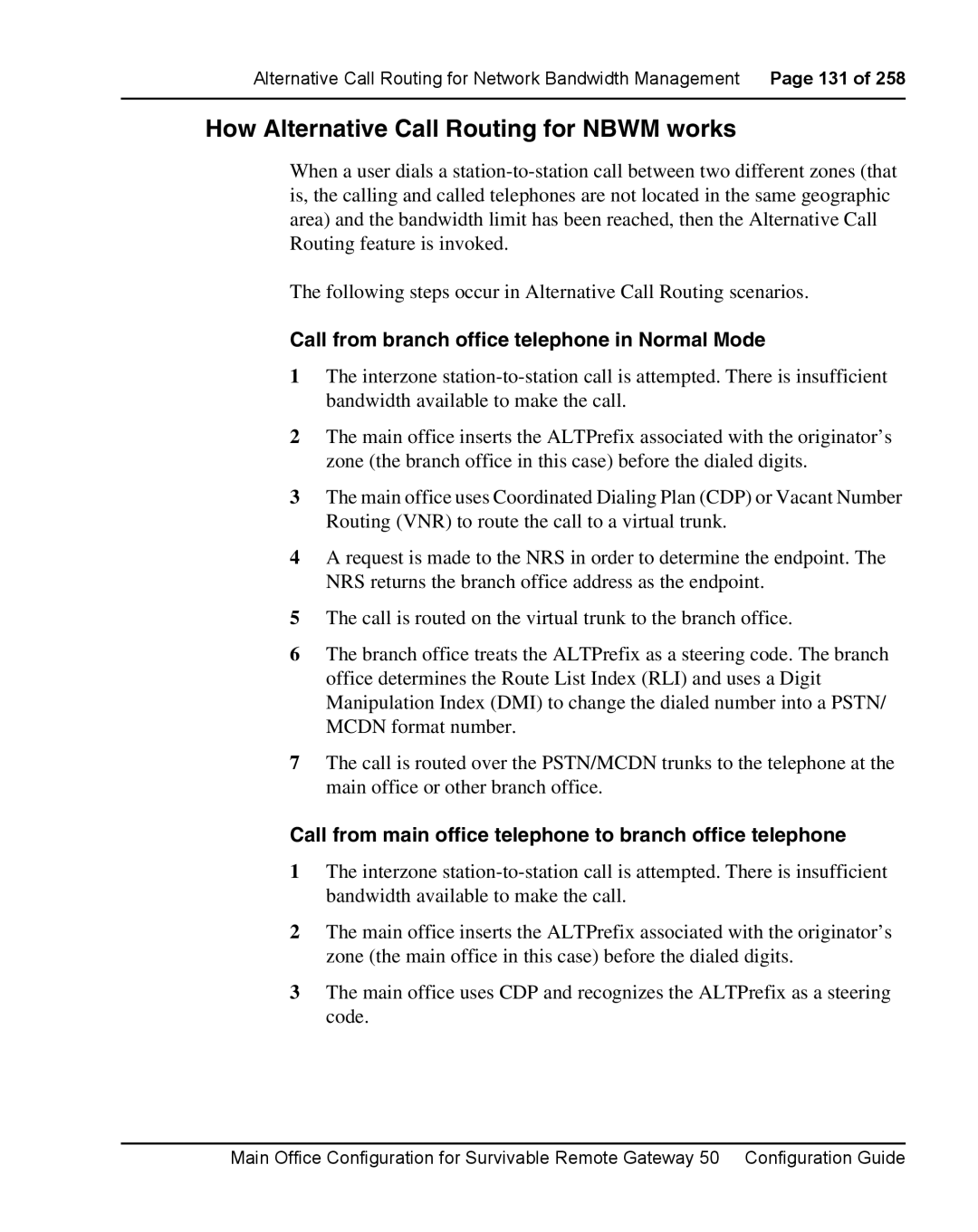
Alternative Call Routing for Network Bandwidth Management Page 131 of 258
How Alternative Call Routing for NBWM works
When a user dials a
The following steps occur in Alternative Call Routing scenarios.
Call from branch office telephone in Normal Mode
1The interzone
2The main office inserts the ALTPrefix associated with the originator’s zone (the branch office in this case) before the dialed digits.
3The main office uses Coordinated Dialing Plan (CDP) or Vacant Number Routing (VNR) to route the call to a virtual trunk.
4A request is made to the NRS in order to determine the endpoint. The NRS returns the branch office address as the endpoint.
5The call is routed on the virtual trunk to the branch office.
6The branch office treats the ALTPrefix as a steering code. The branch office determines the Route List Index (RLI) and uses a Digit Manipulation Index (DMI) to change the dialed number into a PSTN/ MCDN format number.
7The call is routed over the PSTN/MCDN trunks to the telephone at the main office or other branch office.
Call from main office telephone to branch office telephone
1The interzone
2The main office inserts the ALTPrefix associated with the originator’s zone (the main office in this case) before the dialed digits.
3The main office uses CDP and recognizes the ALTPrefix as a steering code.
Main Office Configuration for Survivable Remote Gateway 50 Configuration Guide
